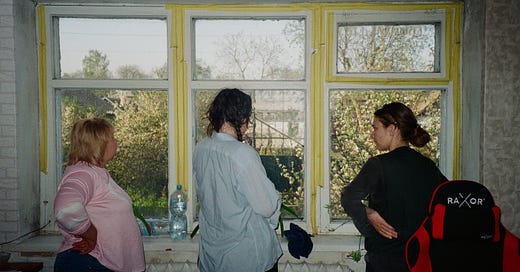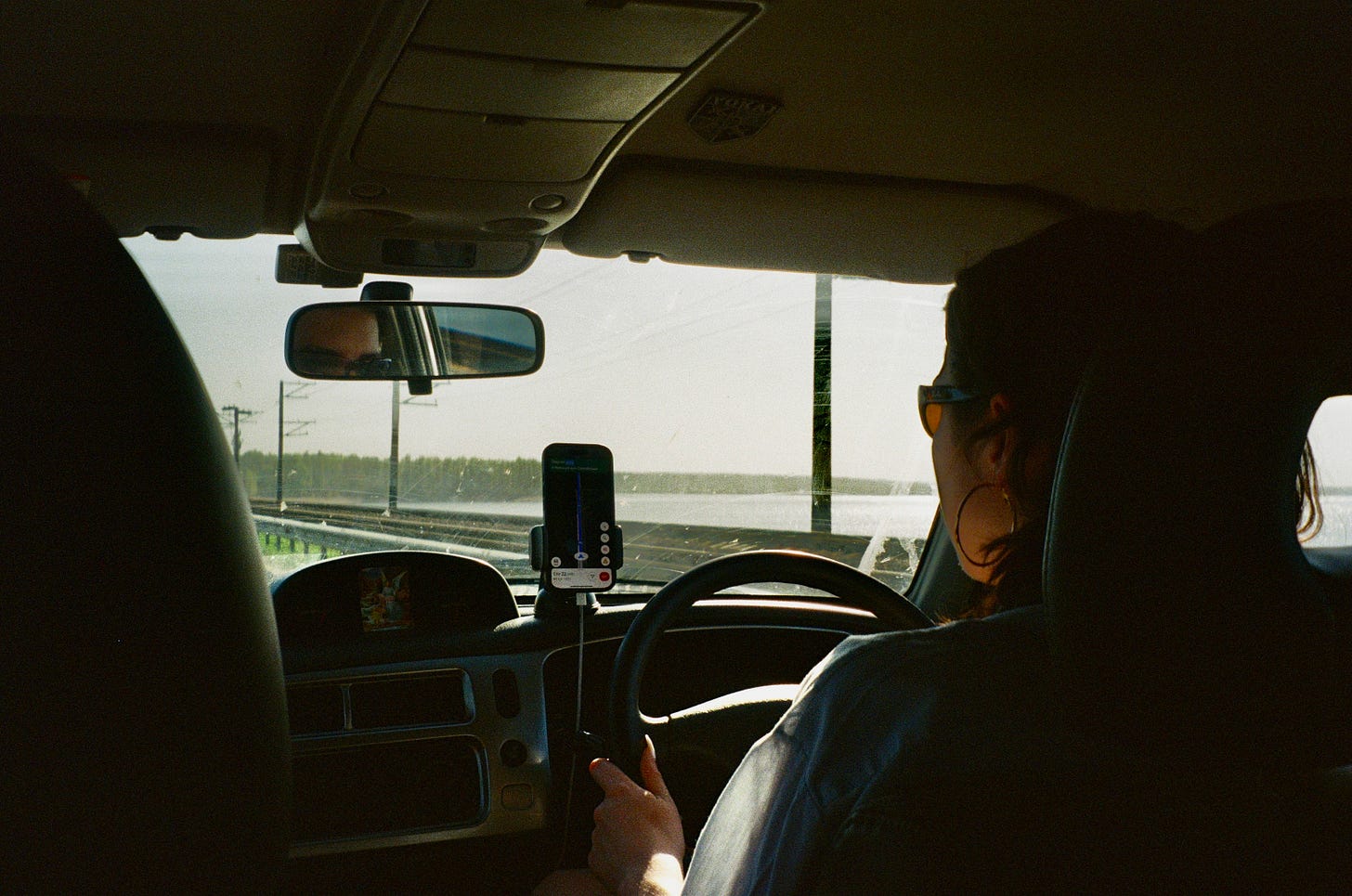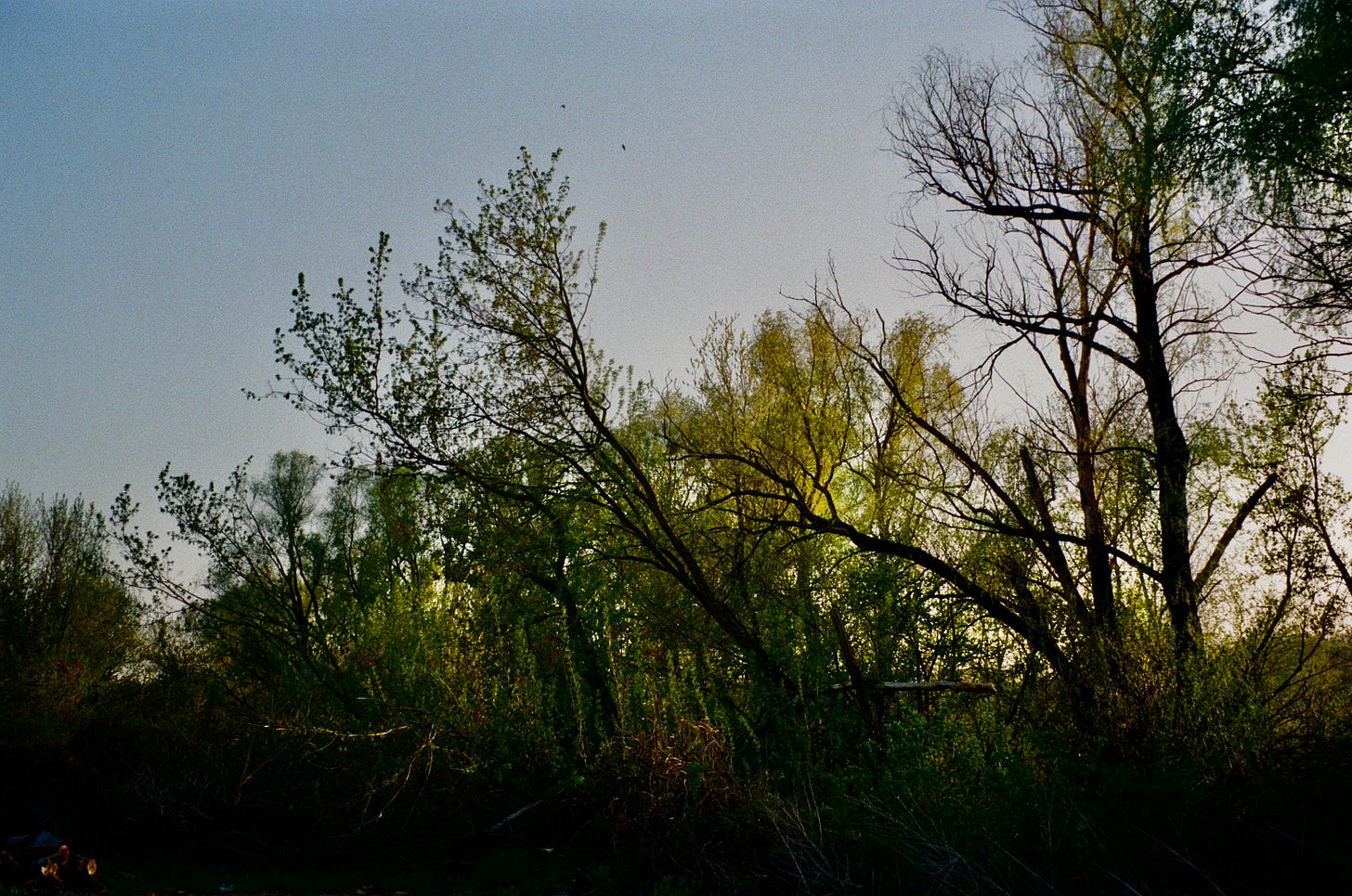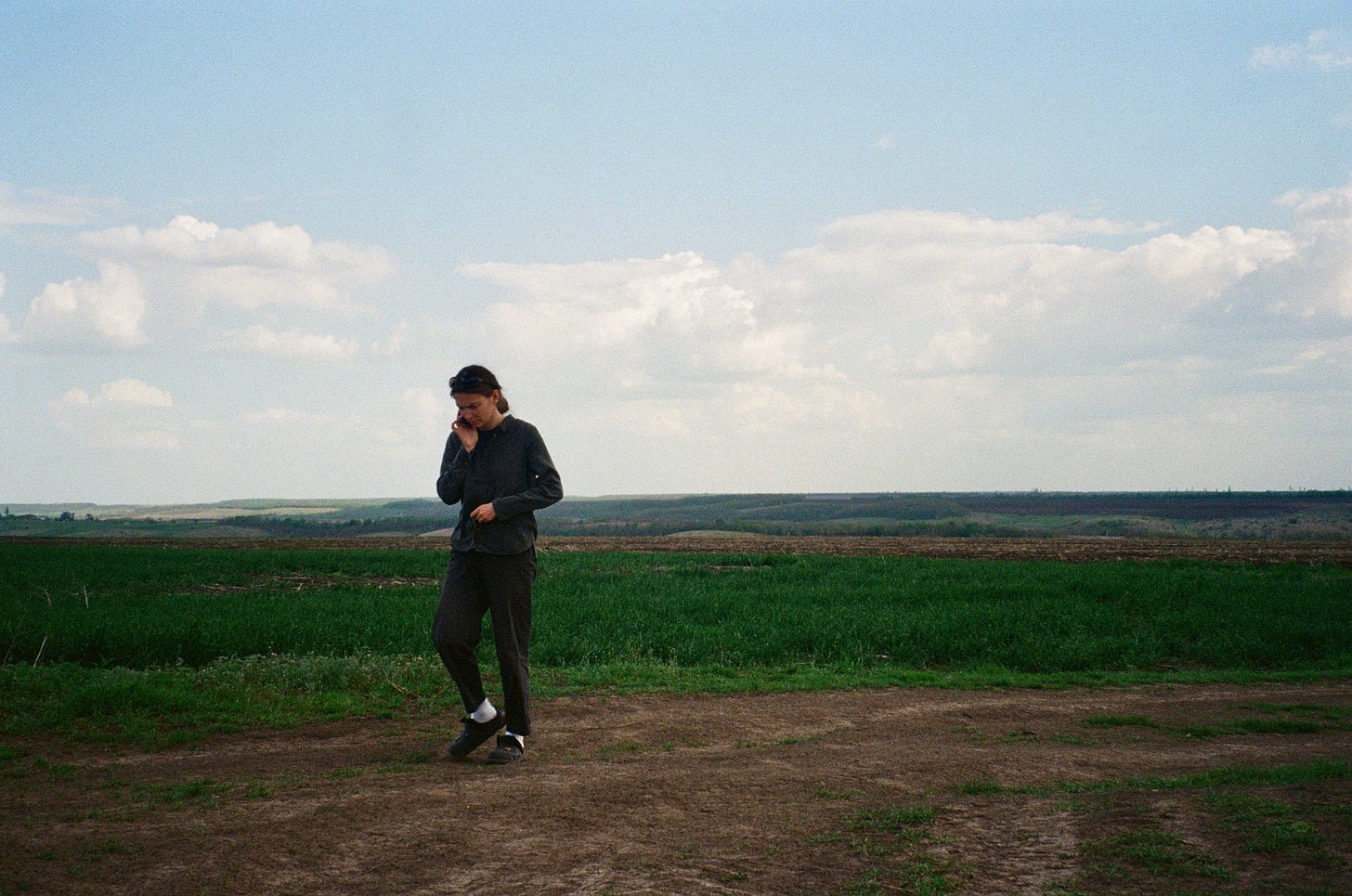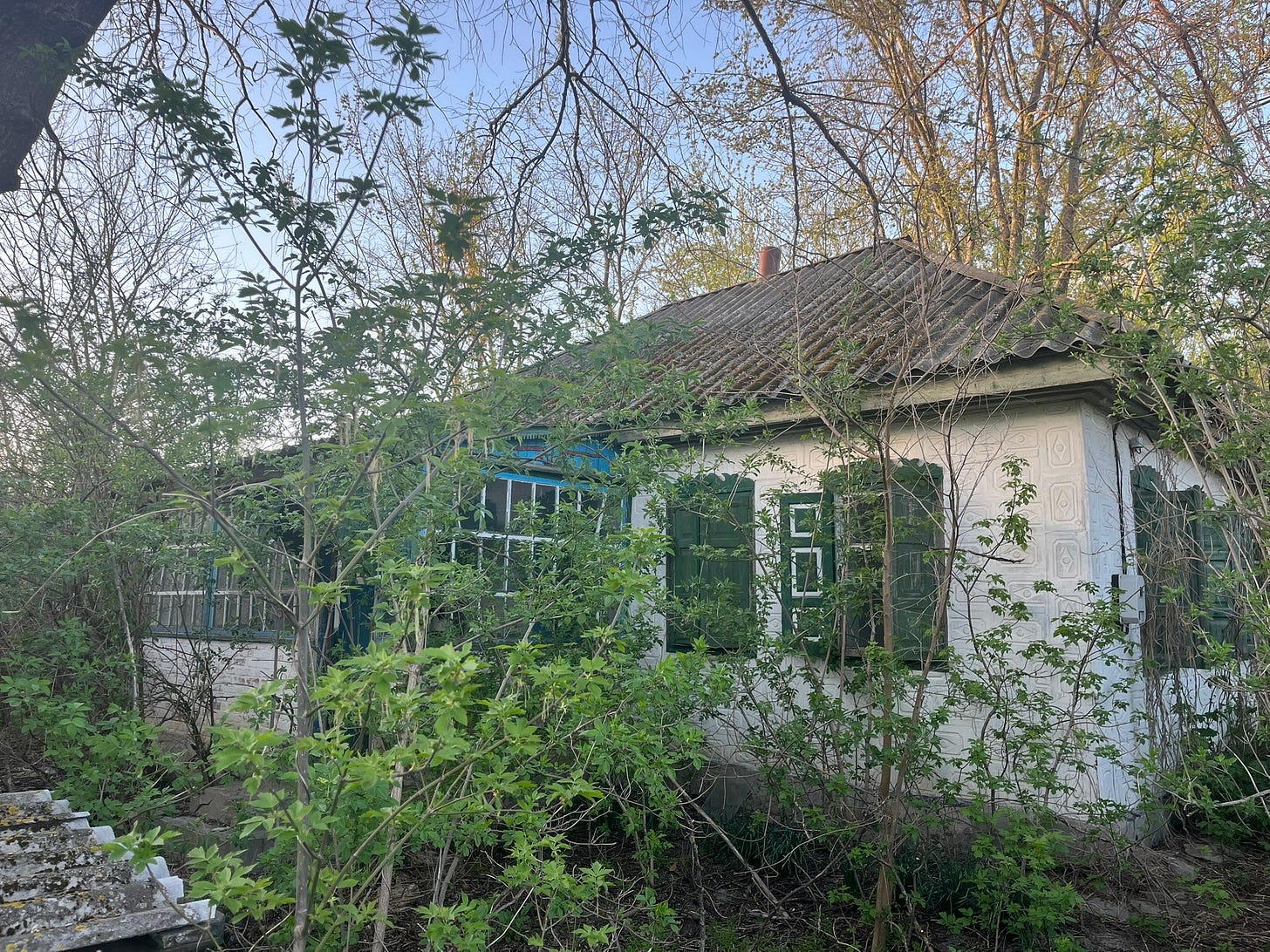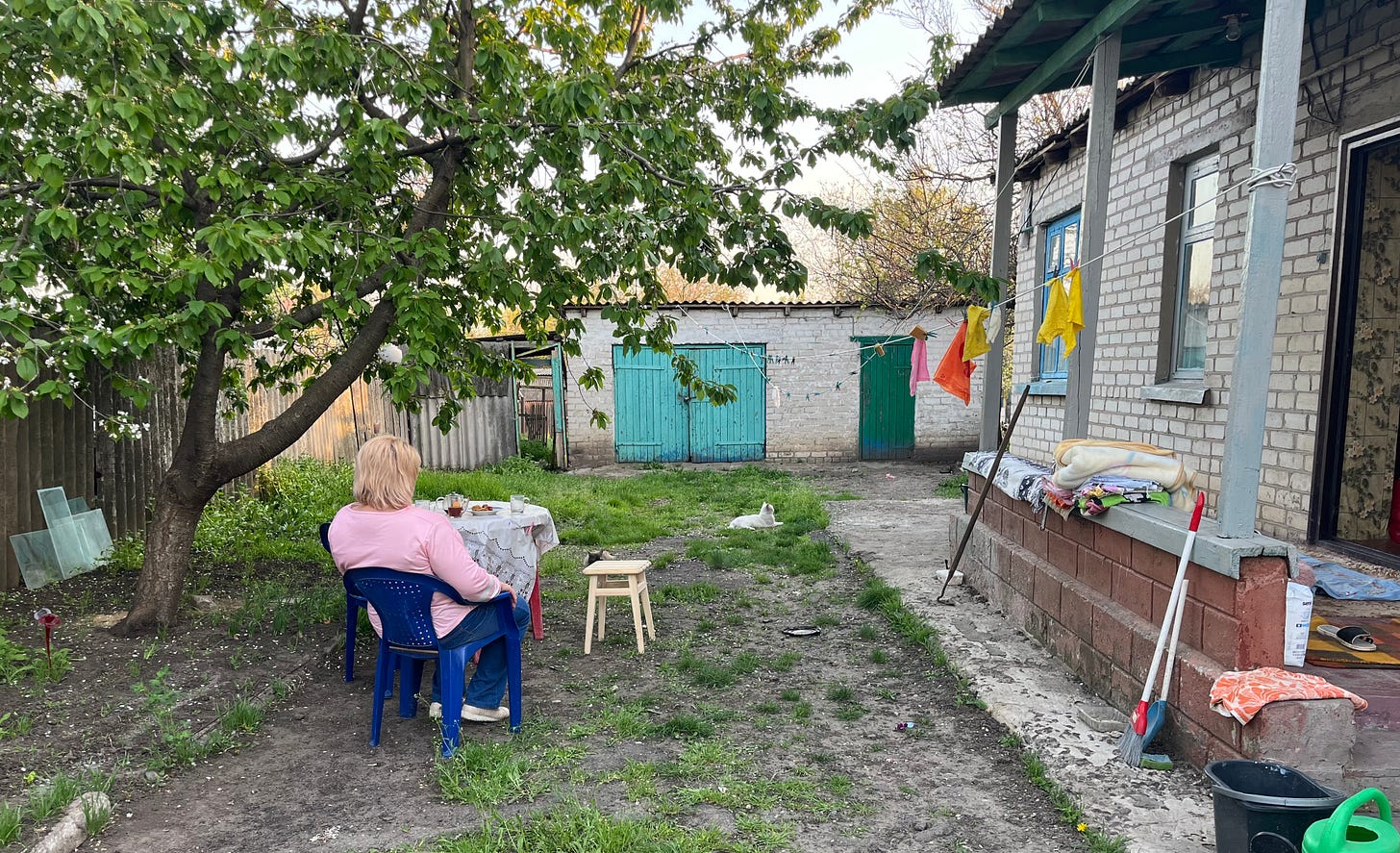In our last edition, I wrote briefly of our new project restoring housing for IDPs. Jamie Onslow, a British journalist based in Kyiv, came with us on our trip around some of these houses, and kindly agreed that we could share this experience in our newsletter, to give more of a sense of the people with whom we are now working and of how this new project is taking shape. This trip took us to three different families, all from Myrnohrad in Donetsk Oblast, and two of whom we are now helping with home repairs. These families are all former neighbours of Katia, who has been supporting KHARPP’s work in numerous capacities since last year. Some of you may remember a previous newsletter about Katia’s sister, who continues to serve in the police force in Donetsk Oblast, evacuating civilians from the front, and for whom we provided protective this winter.
We are so pleased to be able to support these families as they adjust to lives as internally displaced people. However, our list of requests grows larger every day - and is currently at around 200 - so please consider continuing to donate, in order to ensure that we are able to help families like those mentioned in this newsletter.
On this trip, we also visited the grave of the recently killed Ukrainian artist and soldier Marharyta Polovinko. I never met Marharyta personally, but her artwork had illustrated the essay series we took part in late last year for e-flux, and she was supposed to also be taking part in the public programme of the Venice Architecture Biennale’s Ukrainian Pavilion alongside KHARPP. She was also a close personal friend of numerous people who work with KHARPP. Her death is a further reminder of the countless sacrifices being made every day in Ukraine and as an organisation we sent all of our solidarity, love, and condolences to her friends and family.
We set off from Kyiv on the Monday morning after Easter. In the car were me, Ada, Katia and Ivanka.
Our trip would take us south from Kyiv into the oblasts of central Ukraine. We were visiting the new homes of Katia’s family friends from Myrnohrad, a town that is now on the frontline in Donetsk Oblast, with the intention of helping with repairs to make the homes fit for longterm inhabitation.
Myrnohrad’s neighbour, Pokrovsk, is one of those Ukrainian towns that has gone from relative obscurity to international fame as a hotspot in the war – a change in status that also marks the end of a town’s life. Just like Pokrovsk, Myrnohrad is currently in the process of being flattened by Russian bombs. Of a prewar population of 50,000, only a few thousand remain.
Katia organised the evacuation of several families from the town in August last year. We would be staying first with Tetia (Auntie) Maryna and Diadia (Uncle) Serhii, Katia’s childhood neighbours. And then Tetia Daria and Diadia Ihor, Katia’s sister’s godmother, and her husband.
As we drove out of the city, Ada took a call from Kolia, the starosta of Novopavlivka, a village near the front in Dnipropetrovsk oblast, whose residents KHARPP is beginning to support in moving to safer parts of the country.
She asked him how things were. His answer somewhat punctured our buoyant mood. Kolia’s house had been destroyed by a Russian bomb on Easter Saturday, his farm just the night before.
This is my first time leaving Kyiv since I arrived two months ago. At times in Kyiv you can come close to forgetting there’s a war on. People go to bars and clubs and hang around at coffee shops. But there’s a sense of unease – everyone is fully aware that people are being killed and towns razed to the ground just a few hours away. People keep on telling me that Kyiv is not “real Ukraine.”
Our route initially takes us along the left bank of the Dnipro river. As we cross from Kyiv oblast into Cherkasy Oblast, Katia announces that “this is real Ukraine.”
The roads are in a bad state, littered with potholes, but either side of the road the sun beams down on trees just coming into leaf. Enormous fields stretch over the gently rolling countryside. Tractors throw up long dust clouds. We’re all reduced to offering inane commentary on the rural idyll unfolding before us. Ukraine is so beautiful. Ukraine is so nice. I love Ukraine. And so on.
Driving in war-time Ukraine brings its own challenges. At one point the GPS cuts out without me realising, and I confidently drive off the road and onto a farm track. Katia tries to suggest that I’ve taken a wrong turn, but I calmly point to Google Maps, which shows that I’m following the correct route.
A few minutes later the GPS switches back on again and it becomes clear that I’ve driven well off the route. We decide to stop in the middle of a field to stretch our legs. I turn the car around, and as we leave a fighter jet appears overhead. Then we spot a plume of smoke on the horizon. We piece together what’s happened – there’s been a Russian missile attack, during which GPS services are unavailable. Taking wrong turns is far less embarrassing when you can blame it on the Russians.
Our first stop is in the village of Stetsivka. A friend of Kolia’s the starosta of Novopavlivka, owns a derelict khata (cottage) in the village which he has offered to a family of internally displaced people. Ada wants to have a look at it to see if it could be made inhabitable.
It takes us some time to find the khata, driving down an increasingly uneven dirt track. It’s engulfed by vegetation. The exterior walls are tiled white, the roof and window shutters painted green. It’s not hard to imagine it being a quaint countryside retreat. Ada jokes that she might move in herself.
It’s in decent condition - windows all in their frames, roof intact. There’s a well in the garden that could provide water if fitted with a pump. But there’s no indoor kitchen or bathroom, and no central heating. It will take some work to make it liveable.
Ada wonders aloud whether IDPs from Novopavlivka would be willing to move into such basic accommodation. Katia points out that many of them are already living in far worse conditions.
We get to Kosivka after nightfall, where we ‘re staying with Tetia Maryna and Diadia Serhiy, old friends and former neighbours of Katia’s family. It was the first time that Katia had seen them in five years - after the war started she thought she would probably never see them again.
Maryna sits Katia down and starts fussing over her, her broad smile infecting all of us as we gather around the kitchen table to eat. Maryna has prepared vast amounts of food, and I seem to be singled out as a particular focus for nourishment. “You’re a man, you must eat,” she explains.
Maryna and Serhiy had moved from an apartment in Myrnohrad to a private cottage some ten years ago. They had spent years turning it into a home for their retirement with all the most modern European conveniences and a blooming rose garden. Katia had visited many times and spoke about it as a pinnacle of domestic comfort. They decided to leave when a Russian shell exploded in their garden.
They are the only IDPs who’ve settled in Kosivka. They have not found the village to be particularly welcoming, and their fellow residents have kept themselves at a distance.
“There’s no war here, and they don’t what it’s like. We’re almost like foreigners to them,” Maryna said, recounting how a neighbour had refused to sell her some of her smetana.
We tell them about the khata we’d visited earlier that day, which prompts a word of warning from Maryna. She and Serhiy had twice moved into rented cottages after leaving Myrnohrad, spending their own money on renovations, only for the owners to evict them in order to sell the property once they had made it liveable.
They eventually found a cottage to buy in Kosivka for a few thousand dollars. For a third time they spent their savings on renovations – heating, light and running water. Katya told us that Maryna loves to cook, and we were treated to an unbelievable selection of dishes. But she was embarrassed to show us her kitchen, which is in an outhouse across a yard.
Katia helps cook breakfast the next day, and comes back shocked. She said she could never have imagined Tetia Maryna cooking in such a kitchen – the walls smeared black and green with mould.
KHARPP is going to do work to improve Maryna’s kitchen. She and Serhiy have a granddaughter, who they look after for at least a few nights every week. She’s twelve years old, and was so traumatised by the war and her evacuation from Myrnohrad that she developed diabetes. Having a sanitary and comfortable cooking space will make it easier for Maryna to give her the care that she requires.
The next day we drive further south to Kryvyi Rih, birthplace of Volodymyr Zelenskyi. I’ve never seen a city like it. It’s supposedly the longest city in Europe, and tracks a vein of iron ore that runs north to south. We drove in through vast Mordor-like hillsides carved up by lorries shuttling back and forth. Vast industrial citadels dot the landscape, surrounded by clusters of ramshackle cottages.
We visit the military graveyard in Kryviy Rih, where a close friend of Katya and Ivankas’ had been buried ten days earlier. Marharyta Polovinko had been a rising star of the Ukrainian art world. She joined the army last year, and was killed by a Russian drone on 4 April.
I didn’t really know what to expect from the graveyard. As we walk in Ada asks me if I’d visited a military graveyard before, and I say no – half expecting it to be a bit like my first sights of other military-related artefacts in Ukraine, or like going round historic sites of death where you know something terrible happened but it’s impossible to really comprehend it.
But as we walk across the gravel towards the graves, I see an old man getting back into his car, wiping tears from his face, and from then on it’s hard to keep the tears at bay.
The cemetery is full of families. Mothers sitting by their sons’ graves, talking softly. A group of young men pouring out toasts. I count eight new graves that have been dug in the ten days since Marharyta’s burial. It’s a very dark tragedy that's happening in Ukraine.
Our next stop is the brilliantly-named village of Rannyi Ranok – literally ‘Early Morning’ – home to Tetia Daria and Diadia Ihor, Katia’s sister’s godmother. It was another joyful reunion, and we were again treated to an equally expansive feast.
Daria and Ihor left Myrnohrad in August last year, when the war had come so close that they were living under constant Russian shelling.
“I used to see war on television, on the news, but I never thought I’d see it with my own eyes. Jets flying so low you think they’re going to hit your building. It was terrifying,” Daria told us.
Daria’s son is a sniper in the army. He stepped on a landmine earlier this year, shattering the bones in his leg. Daria worries about him a lot, praying that he will survive the war.
After lunch, we drive an hour and a half to Luhanka, where Lera, Daria’s sister now lives. Having struggled to understand a lot of the Russian being spoken at breakneck and vernacular speeds, I have a vague understanding of what awaits us – that Lera lives with their parents, her husband, and her adult son, who has autism and is unable to work, and that Ada wants to do some work on their house.
Lera greets us at the door and welcomes us inside. The house smells strongly of damp. Gesturing into the first room on the right, she introduces her husband Zhenia. I look into the room, and see Zhenia lying on a bed. Daria later explains that he was paralysed from the waist down in a botched operation five years ago.
Continuing the house tour, Lera opens the door to what I assume is a closet, but which is actually a small room containing Lera and Daria’s parents. They are unable to walk, and now spend their days in this tiny room. Neither of these rooms have windows that open, and Lera is unable to move them by herself. The three of them spend their days lying in the damp.
Lera at first didn’t think she would be able to leave Myrnohrad because she had no savings with which to buy a place to house her family. But relatives helped out and they managed to scrape together $5,500.
They moved in at the end of summer. When the weather got colder in October, they found out that the central heating system didn’t work. They had no money to fix it, and spent the entire winter sleeping in their coats and hats.
“Everything got damp - the wallpaper, the cabinets, clothes. Everything started to smell of mould,” Daria tells us.
Afterwards we sit outside. Katia says she had been mentally preparing herself all day to see the conditions in which Lera and her family had been living, but it was still too much. She spoke about how unfair it is that Lera and her household have been left to live with almost no support.
It is hard to imagine how a family could be any more vulnerable. And yet, other than their evacuation, which Katia arranged through an NGO, they have been left to fend for themselves. I later found out that Lera had applied for a form of social security offered to IDPs, but had been rejected on the grounds that she could find a job instead. The entire family is now living off Daria and Lera’s father’s pension, which amounts to UAH 3,000 (£54) a month.
KHARPP is currently in the process of getting the windows replaced, and the heating fixed, as well as doing repairs on the bathroom, which is currently unusable. As we leave Lera’s place, she says that she at first didn’t believe it when she was told about KHARPP, and that someone would come and fix their heating for free.
We drive back to Rannyi Ranok, where Diadia Ihor had fired up the barbecue and was in the process of grilling up platters of meat. I am again singled out for repeated helpings. This could be my role within KHARPP – physically absorbing the extreme hospitality that Ada is treated to in the homes she visits.
As we finish dinner, we hear the sound of a Russian drone flying somewhere in the distance, and we speculate about where it could be headed.
The next day we drive back to Kyiv, arriving late at night. I’m exhausted, and announce to the car that I will sleep well tonight. It wasn’t to be, unfortunately. I was woken at 1am by a ballistic missile hitting Kyiv, and spent the rest of the night in a bomb shelter. Twelve people died in the attack.
Regardless of what happens in the war now, the families we visit will likely never be able to return to their hometowns. The lives they built over decades have been erased, and they have been left trying to maintain a sense of stability and dignity in unfamiliar new environments, with minimal support from anyone outside their immediate family.
I came to Ukraine as a journalist to cover reconstruction. At the start of the year, many were optimistic that Trump would be able to do a deal, the fighting would end, and reconstruction would begin. That optimism seems a long time ago now.
But thinking of reconstruction as some abstract process that will begin once the war is over is not good enough. For the families that KHARPP is working with, reconstruction is a constant, daily struggle, and one in which they have received very little help.
Everyone I met in the space of our three-day trip showed extraordinary resilience. It was deeply moving to be treated with such warmth and hospitality by families who have lost almost everything. But resilience alone isn’t enough. As Ukraine eventually moves toward rebuilding, the question remains whether its most vulnerable displaced citizens will be remembered or forgotten.

